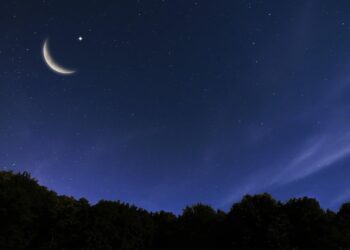The saxophonist Kamasi Washington, 34, is a key figure in the Los Angeles jazz scene. As well as leading his own band, the Next Step, and collaborating with a variety of jazz musicians, he has worked with the likes of Snoop Dogg, Lauryn Hill and Chaka Khan. Washington was a distinctive presence on Kendrick Lamar’s latest album, To Pimp A Butterfly, and in May released The Epic – his wildly ambitious 172-minute debut studio album – to rave reviews.
I got into music really young. I started playing drums at three, then piano at five, then clarinet. But it wasn’t till I picked up a saxophone aged 13 that I really got serious about music. One day my dad left his sax out and I decided I was going to play my favourite track, Sleeping Dancer Sleep On by Art Blakey and the Jazz Messengers. It was very immediate. The saxophone felt like my voice – the music in my head just started coming out. Two days later I was playing in my uncle’s church band.
Music was all around me as a kid. My dad was a professional musician; my mom played too but just for fun. All my siblings played. The house was full of music books, videos, albums. I guess it’s not surprising that I ended up becoming a musician.
Collaborating with a rapper like Kendrick Lamar is not that different from collaborating with another jazz musician. The difference is between artists: whether they give you creative freedom or not. Kendrick did – he wanted me to figure something out rather than just following his lead.
Genres don’t mean much to me. There are no hardline distinctions between two styles. Add certain elements, it’ll be this; take a few away, it’ll be that.
I grew up with a bunch of great musicians. In 2011 I got eight of us together in a studio to document the sound we’ve been developing our whole lives. It was like getting the planets to align, but in the end we cancelled all our gigs and spent a month in the studio. It was a music sweatshop: we’d start at 10am and work till 1 or 2 in the morning. Each person had their own project, and by the time we finished we had 190 tracks between us. I ended up with 45 tracks just for my own album. It took me six months to decide what to use, a whole year to finish the tracks and another year to mix it. I put my whole life savings into making The Epic. It was the biggest challenge of my career.
Songs strike me in unexpected places.When I was younger I’d be walking down the street and suddenly panic because I had a cool idea and no way of getting it down – I’d have to sing it all the way home. Now I can hum it into my phone.
My studio is organised chaos. I have ideas for songs all over the place, written on Post-It notes and little scraps of paper and journals.
Ideas don’t come from me, they come through me. A seed of a song will just hit me and I don’t know where it comes from or why.
Writing a song is like going into a dark room to look for unexpected treasure. You fool around for a while and grab something, but it’s not until you bring it into the light that you see what you have. For me, that means listening to other musicians play what I’ve written. Whenever I have a new track, I bring it down to the Piano Bar in Hollywood, where the collective I’m part of [West Coast Get Down] test it out. Over five years we’ve filled this big super-thick book with 300-400 tracks.
A song is a living thing. You’re always fine-tuning the details. The recording is just a snapshot – it continues to evolve long after you’ve set it down.
MY TOP FIVE
Out to Lunch!, Eric Dolphy (1964)
When I told my dad I’d started playing sax, he took me to his friend Calvin’s house and played me Out to Lunch! – he wanted to see how deep I was. Even though it’s considered a difficult album and I was only 13, I loved it straight away. It really impressed my dad and his friends that I liked Eric Dolphy.
Transition, John Coltrane (1970)
This album consumed me for a long time – I listened to it every day for years when I was younger, more than anything else, and I still listen to it now. It’s probably the most influential solo album for me. There’s something very powerful about the title track.
The Rite of Spring, Stravinsky (1913)
I went to a music academy in Los Angeles and some friends started playing me Ravel and Prokofiev, who I liked, but what really blew me away was The Rite of Spring. That’s what made me get interested in classical music for real and want to study it.
When Disaster Strikes…, Busta Rhymes (1997)
This was the first time I heard Busta Rhymes and I really got into the very fast, intricate way he uses rhythm. His approach really affected me – I’ve tried to mimic the way he raps on the saxophone.
Songbook, Kenny Garrett (1997)
Before Songbook, all the jazz albums I was heavily into were old. This was the first time I’d heard a contemporary musician who was making something on the same level as Coltrane’s Transition. It made me realise that music is not dead, it’s not something of the past – it’s now.
The Epic is out now on Brainfeeder. Kamasi Washington performs at the Barbican, London EC2, 14 November 2015 as part of the London Jazz Festival.



















